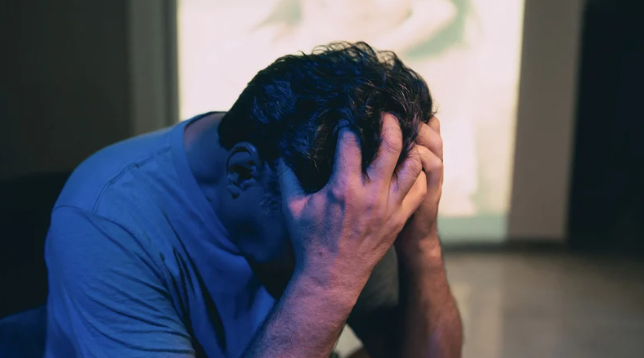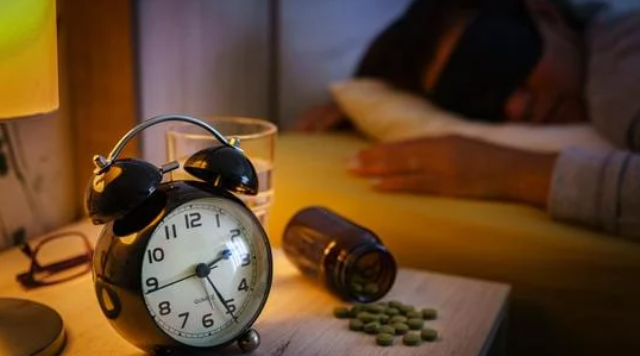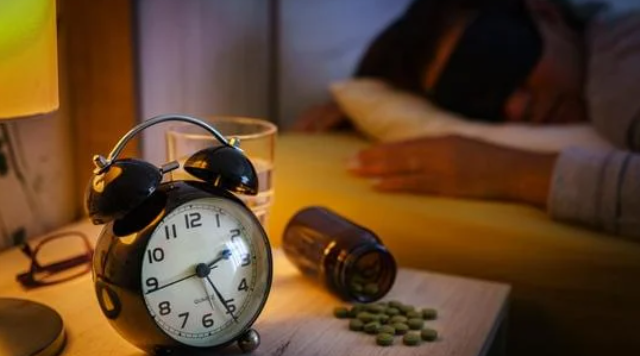If you’re reading this because sleep has become a battle, you’re not alone. Nearly 40% of American adults struggle with insomnia, and many turn to sleeping pills just to get through the night.
Sleeping pill addiction can creep in quietly; what once felt helpful can become a heavy burden. That doesn’t mean you’re weak; it means your brain and body have been trying to cope the best way they can.
So let’s take the first steps together! Before changing anything, schedule a quick check-in with a clinician who understands sleeping pill addiction. Pick a steady wake-up time (even on weekends) and keep a simple sleep diary for the next 7 days. In the evenings, try a calmer wind-down and use your bed only for sleep.
If you’re awake for about 20 minutes, get up briefly and return when sleepy. With your provider, plan a slow taper, often 10-25% reductions spaced over weeks, so your body can adjust without shock. And please don’t stop benzodiazepines or Z‑drugs abruptly.
In this blog post, we’ll further show you how to recognize warning signs, understand risks, and pair CBT-I with a clinician-guided taper to rebuild natural sleep while avoiding withdrawal.
So, let’s get straight into it!

Are “Safe” Sleep Aids Really Safe?
Over-the-counter sleep aids are often seen as harmless because you can buy them without a prescription. That assumption can be misleading. Many common products rely on first-generation antihistamines like diphenhydramine (found in Benadryl and Tylenol PM) and doxylamine.
These drugs block histamine receptors to make you drowsy, but they also have strong anticholinergic effects that can cloud your thinking, slow your reaction time, and increase the risk of falls. Older adults are especially vulnerable, since the body clears these medicines more slowly over time.
Addiction can quietly develop here, too. Diphenhydramine is one of the most misused over-the-counter medications. You might notice that the dose that once worked no longer does, or that you feel worse when you try to stop.
That’s not a personal failure, it’s a sign your nervous system has adapted, and it needs a thoughtful plan to unwind. If you’re unsure where to start, Hand in Hand Recovery can help you review your current meds and map a safer path forward.
Why Are Experts Raising the Alarm and Why Does It Matter?
In recent years, many medical leaders have called diphenhydramine a public health concern and urged tighter controls, like moving it “behind the counter” to include pharmacist guidance.
The goal isn’t to shame anyone who uses these medications; it’s to protect people who, often without realizing it, are drifting into dependence while just trying to sleep.
If that’s you, you deserve support, not judgment.
What Happens When Prescription Sleep Aids Raise the Stakes?
Prescription medications like benzodiazepines (for example, temazepam) and “Z-drugs” (like zolpidem/Ambien, zopiclone, and eszopiclone) can be effective short term. They enhance GABA, the brain’s main calming chemical.
But long-term use can lead to physical dependence, making it very hard to stop without support. Many people seeking help for sleep are already taking these medicines, and about one in five stays on them for years.
The risks are real and human: drowsy driving, falls, foggy thinking, and dangerous interactions with other medications (especially opioids). Stopping suddenly after prolonged use can trigger rebound insomnia, severe anxiety, and, in rare cases, seizures.
If you’ve tried to quit and felt worse, you’re not broken, your brain is signaling that it needs a safer, slower approach.
A clinician-guided taper within a structured program like Hand in Hand’s Detox, PHP, IOP, or Outpatient levels of care can make the process safer and more manageable.
Warning Signs of Sleeping Pill Addiction
Recognizing these signs can be a crucial step toward understanding your relationship with sleep medication. Approaching them with self-compassion can open the door to support.
Behavioral Red Flags:
- Using sleep aids daily instead of occasionally
- Taking higher doses than recommended or prescribed
- Using combination products (like NyQuil) solely for sleep
- Feeling unable to sleep without medication
- Continuing use despite side effects like daytime drowsiness
- Getting defensive when others express concern about usage
Physical Signs:
- Building tolerance (needing more for the same effect)
- Experiencing withdrawal symptoms when trying to stop
- Persistent daytime fatigue or “brain fog”
- Increased falls or accidents, especially in older adults
- Memory problems or confusion
Concerning Patterns:
- Shopping multiple pharmacies for the same medication
- Using telemedicine services to obtain multiple prescriptions
- Inability to name the active ingredient in sleep aids being used
- Lack of awareness about potential risks and side effects
Who’s Most at Risk?
Some people carry a heavier load when it comes to sleep medication risks and none of it is their fault.
Older adults:
This group uses a large share of over-the-counter medicines and is often less informed about their risks. Slower metabolism with age can make side effects and dependence more likely.
Adolescents and young adults:
When stress, academic pressure, or curiosity collide, sleep aids can feel like a safer escape. The brain is still developing during this time, which can increase vulnerability.
People living with anxiety, depression, or trauma:
If calming the mind feels impossible, the soothing effects of sleep medication can become a lifeline, and then a trap. Psychological dependence can take root even when the intention was simply to find peace. Hand in Hand provides dual-diagnosis treatment, addressing mental health and substance use together.

Those managing chronic pain:
Pain and poor sleep feed each other. If opioids and sleep medication overlap, risks multiply. You deserve a care plan that acknowledges how complex this is. Further, integrated therapies like CBT, trauma/PTSD therapy, holistic approaches, and medication management can be customized to your needs.
What Are the Comprehensive Treatment Approaches?
Healing from sleeping pill addiction is not about “just stopping.” It’s a gentle, evidence-based process that helps your brain relearn safety at night while protecting you from withdrawal and relapse.
CBT-I: Step-by-Step Rebuilding Sleep Confidence
Cognitive Behavioral Therapy for Insomnia (CBT-I) is considered the gold standard for chronic insomnia. It’s practical, skills-based, and deeply empowering. You’ll learn how to reduce nighttime anxiety, reset your sleep window, and rebuild trust in your body’s natural rhythms.
Many people begin CBT-I while they’re still taking medication, and that’s okay. In fact, research shows combining CBT-I with a gradual taper works better than either alone. CBT-I helps you feel less scared of bedtime and gives you tools beyond a pill.
Hand in Hand offers Cognitive Behavioral Therapy as part of treatment, along with complementary therapies like family therapy, life skills, holistic therapy, and aftercare planning.
Core CBT-I strategies often include sleep restriction to improve sleep efficiency, stimulus control so your bed becomes a cue for rest rather than worry, relaxation skills that calm your nervous system, and gentle cognitive shifts that soften the “what if I don’t sleep?” thoughts that fuel insomnia.
Slow, Safe and Supported Tapering
When it’s time to reduce medication, a slow, personalized taper helps your brain adapt without panic. This usually includes a thoughtful assessment to understand why you started and what you need now.
It is a clear guidance about withdrawal and how to cope small dose reductions over weeks or months, and regular check-ins so the plan can flex with your life.
For tougher cases, clinicians may use advanced strategies like “blinded tapering,” where you don’t know exactly when tiny reductions happen, or a short-term switch to newer, non-addictive options such as Dual Orexin Receptor Antagonists (DORAs).
These approaches aren’t about taking something away, they’re about giving your nervous system time and safety. Hand in Hand’s Medication Management and physician oversight help you taper safely and confidently.

Healing the Roots of Sleeplessness
Lasting change also means tending to what keeps your mind awake.
This might look like learning kinder ways:
- to manage stress and nighttime worry
- getting support for anxiety, depression, or trauma, addressing medical issues that disrupt sleep (like pain, reflux, or sleep apnea)
- gently improving sleep hygiene and your bedroom environment
- and making small, sustainable changes to routines around caffeine, alcohol, movement, light, and screens.
None of this has to be perfect. Small steps count, and they add up!
A Step-by-Step Process of Tapering Off Sleeping Pills
If you’re ready to step away from medication, think of this as a partnership with your clinician, built on trust and your goals; not on pressure or timelines.
Step 1:
Assessment and preparation. Have an honest, shame-free conversation with your provider about why you want to stop and what you hope for. Together, you’ll name the benefits; clearer thinking, steadier energy, and prepare for temporary withdrawal symptoms with practical coping tools, so nothing catches you off guard.
Step 2:
Start with therapy, not tapering. Beginning CBT-I before reducing medication helps stabilize your sleep and rebuild confidence. Many people are still taking sleep meds when they start therapy, and that’s part of the plan, not a problem. Evening IOP at Hand in Hand makes it easier to begin while maintaining work or school.
Step 3:
Gradual and flexible tapering. When your sleep skills are growing, you’ll begin slow dose reductions. The schedule can pause if life gets hard or symptoms flare. You are not failing if you need to slow down; you’re listening to your body.
Step 4:
Advanced strategies for difficult moments. If tapering feels overwhelming, your clinician may suggest options like DORAs or a blinded taper. These are simply tools to ease the process and protect your progress. With an integrated care team, you have ongoing monitoring and adjustments as needed.
Why Does It Matter?
Sleeping pills can bring short-term relief. But for many, they create a cycle of tolerance, withdrawal, and a painful belief that “I can’t sleep without this.” It’s understandable to feel stuck. The truth is gentler: your brain can relearn how to rest.
With CBT-I skills and a slow, supported taper, people routinely reclaim natural, restorative sleep and with it, clearer days, steadier moods, and a deeper sense of control.
Conclusion
Sleeping pill addiction can feel isolating, exhausting, and overwhelming. None of this means you’ve failed; it means you’ve been coping with a hard problem the best way you know how.
So, understanding the risks of both over-the-counter and prescription sleep aids, recognizing the warning signs of dependence, and then taking proactive steps is the most effective solution.
Also, getting the Cognitive Behavioral Therapy for Insomnia (CBT-I) can rebuild your natural sleep abilities with a carefully managed, gradual medication taper. It also means addressing any underlying issues like anxiety, trauma, or chronic pain, and making sustainable changes to your sleep habits.
If you’re ready for support, Hand in Hand Recovery Center helps men across metro Atlanta with personalized taper plans, CBT-based therapy, and a full continuum of care from detox through aftercare and sober living.
Call us now to start breaking sleeping pill addiction and rebuild natural sleep.

 info@handinhandrecovery.com
info@handinhandrecovery.com 3411 Austell Road Suite 200, Marietta, Georgia, United States
3411 Austell Road Suite 200, Marietta, Georgia, United States

